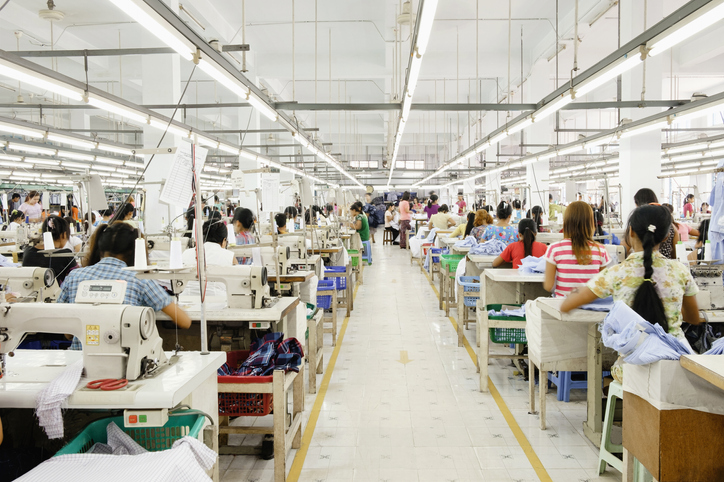Firms are under growing pressure to identify and respond to adverse impacts and show how they apply a “gender lens” to the way they do business. Jiselle Steele of the Oxfam Business Advisory Service explores what that means — and how to reduce negative impacts in supply chains on women and marginalised groups. And you can get expert guidance live at our webinar on 17 September.

(Source: Getty Images/ Credit: Roberto Westbrook)
Applying a “gender lens” to your business means reflecting on how women, men and gender-diverse people are affected by your policies and practices. Firms today are having to pay increasing attention to this, as they come under greater pressure to identify and respond to negative social and environmental impacts and demonstrate how they are upholding the rights of women and marginalised groups particularly across their supply chains.
That pressure reflects how historically businesses have too often overlooked the specific challenges for women and marginalised groups as part of assessing human rights risks. There is growing recognition that business activities are not gender neutral and that factors such as negative gender stereotypes, discriminatory workplace policies and laws can reinforce inequality and undermine workers’ human rights. Despite the EU missing an opportunity to be tougher with companies around protecting rights, the recent adoption of the EU Corporate Sustainability Due Diligence Directive (CSDDD) makes this issue even more topical for European firms.
So, whether your company is just getting started or trying to make progress on work that is underway, we’ve highlighted four ways that you can apply a gender lens to identify and tackle the human rights risks in your supply chains:
- Start small and build from there
Look for opportunities to integrate a gender lens to existing processes. That might mean looking at the specific challenges for women in occupational health and safety checks, raising gender issues in conversations on risk with prospective suppliers or including gender commitments, such as a commitment to tackle gender-based violence, in your human rights policy. For example, the Oxfam Business Advisory Service (OBAS) worked with Reckitt, a global health, hygiene and nutrition company, to integrate a gender lens into their social audit and risk management processes. Our recommendations included collecting additional gender-sensitive data. We also developed clear guidance on how to review and analyse gender data shared by suppliers.
- Invest in training and capacity building
Training will increase knowledge and awareness about gender risks, whether that’s online or in person. It’s important to evaluate the impact of training over time, monitoring what changes or doesn’t in attitudes and behaviours. Targeted training to address negative social and cultural norms around issues such as gender-based violence and harassment is also important. A pilot by Partner Africa that trained auditors on how to carry out gender-responsive audits saw a 600% increase in gender-sensitive issues detected.
- Work with women’s rights organisations, community groups and unions
To get a proper understanding of the risks facing workers and smallholder farmers it’s vital to engage with them, their representatives, and community organisations. These groups can help to prioritise risks as well as strengthening processes around responding to any potential or identified harm or impacts. Oxfam has recently released an introduction on meaningful rightsholder engagement providing guidance to companies on how to do this.
- Safely collect and maintain data about workers by gender and other aspects of identity such as race, ethnicity, age, and sexual orientation
Collecting detailed data broken down by different aspects of identity will help you to understand the risks facing different groups of workers and smallholder farmers. It’s vital to appreciate that when different aspects of identity overlap, this can increase potential risk and impact. Firms must also ensure buy-in from leadership and adequate resources for the systems needed to collect the necessary data and to create a joined up approach across different parts of the business such as procurement, compliance and responsible sourcing teams.
Oxfam Business Advisory Service has been delivering a series of free webinars to explore this topic and other areas, focusing on putting people at the heart of human rights due diligence (HRDD) and sharing practical tips for tackling common challenges for companies.
The next webinar in the series will be on Tuesday, 17th September, at 10 AM BST, sharing practical ways companies can increase the representation of women in leadership. An expert panel will join me there. You can register for the next webinar here. Do also get in touch if you want to catch up on the previous webinars or have a question for the team at advisory@oxfam.org.uk
Oxfam Business Advisory Service helps companies to visibly lead as global citizens, deploying positive business practices to make their supply chains stronger and more sustainable, working together to fight the global inequalities that push people into poverty. For more info on how OBAS can help increase women’s representation and inclusion in your business and across supply chains, contact Jiselle at advisory@oxfam.org.uk